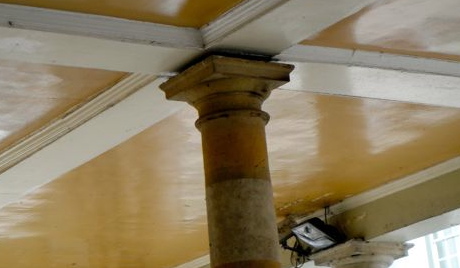Creative value found in Humility
Relying on 30+ years of experiences as an entrepreneur followed by 14 years designing courses in creativity and entrepreneurship for Duke Students, I’ve identified 4 Generative Behaviors that serve our creative and entrepreneurial growth and performance most effectively. When you practice these four behaviors intentionally as you navigate your daily life they will help you steadily grow your creative capacity and develop your entrepreneurial instincts. And when you are focused on a creative or entrepreneurial project, applying these behaviors will improve your outcomes.
Folks easily embrace Being Generous as Being Generative as one of the behaviors even before they learn that generous and generative come from the same Latin word generos, to produce. They have fun with Being Playful—it makes intuitive sense that taking risks becomes easier when missteps are just part of the game. And Enthusiastically Pursuing Beauty has layers of value—being present to your ideas of beauty refreshes you and at the same time your subconscious is absorbing patterns of color or design or texture or sound that enhance your creative capacities; achieving beauty in creative or entrepreneurial expression is often a search for authenticity.
But I have found advocating for Being Humble as a source of creative power a bit more challenging. When I taught at Duke it wasn’t unusual for a senior headed into investment banking to call a fraternity brother already working at Goldman Sachs or Morgan Stanley to get a reaction to Being Humble and then announcing in next class that their contacts insist “Nordgren’s offering you a loser’s strategy in the financial world if he thinks humility is useful”.
One of the first useful insights into Humility is that you can be proud of your accomplishments and humble in your person. And most agree that in fact it’s charming to be with genuinely humble folks who just can’t help it, they have to share their pride and delight for the work they just did on projects they love.
Humility is needed at the beginning of a creative or entrepreneurial project, and most especially when you are making or designing or just trying to imagine something you’ve never taken on before. At that starting point, reminding yourself that you don’t know some of the very important stuff you will need to know in order to make this the best you can make it is vital to your success and an act of humility. You need the freedom humility offers, to recognize and accept your initial ignorance. Then you will be ready to take the most productive first steps.
Like asking questions. Humbly you accept that you’ll start by asking the most ignorant and confused and even silly questions that come to you at first because they aren’t yet informed with the insight you’re going to acquire by humbly listening–fully appreciating–the answers offered to these questions.
There’s a story about a job Sir Christopher Wren took on that I love to tell because it’s so frigging cool and because it illustrates the creative qualities of humility.
Wren was born in 1632 and lived until 1723 and is considered one of England’s foremost architects. He designed and built St. Paul’s Cathedral in London and at 365 feet to the top of its dome it was the tallest building in London from 1710 until 1967. Not a trifling accomplishment.
In addition, and in his day, Wren was nearly as renowned for his work as an astronomer, a mathematician, and a physicist. Isaac Newton and Blaise Pascal would bounce idea off of him; he was a founder of the Royal Society and served as its first president.
The point is, if we would excuse anyone for having the arrogance of insisting on being treated as the smartest person in the room it would be Sir Christopher Wren.
Which makes the story of his building the Windsor Guildhall all the more delightful. Wren was asked to submit plans for the structure but was turned down when he showed fewer support columns than the sponsors of the project felt comfortable with. Because he operated from a much broader knowledge base than other architects his plan was on the cutting edge of load management technology and he was so confident in his design he tried to sell it again and was again turned down.
So he resubmitted plans with the additional columns added and he got the commission.
One hundred years after the Guildhall was completed some renovation and repair work was underway and it was only when the workmen raised their scaffolds high enough to see the tops of the very columns Wren had deemed unnecessary that it was discovered that there was about an inch gap between the top of each of those columns and the ceiling.
Cool, eh? But here’s the evidence of Wren’s humility. He died nearly 30 years after completion of the Guildhall and he never told anyone what he had done. I think most of us would be sorely tempted to prove that we were right and make a grand public reveal a few years later; I know I would be. Instead he was fine simply learning what there was to learn from this and bringing it to his next projects.
Oh, it seems we’re still concerned about those columns, for once the gap was discovered the space with filled in with wooden tiles; they’ve made them smaller than the top of the columns’ capital presumably so visitors can enjoy Wren’s little secret.




